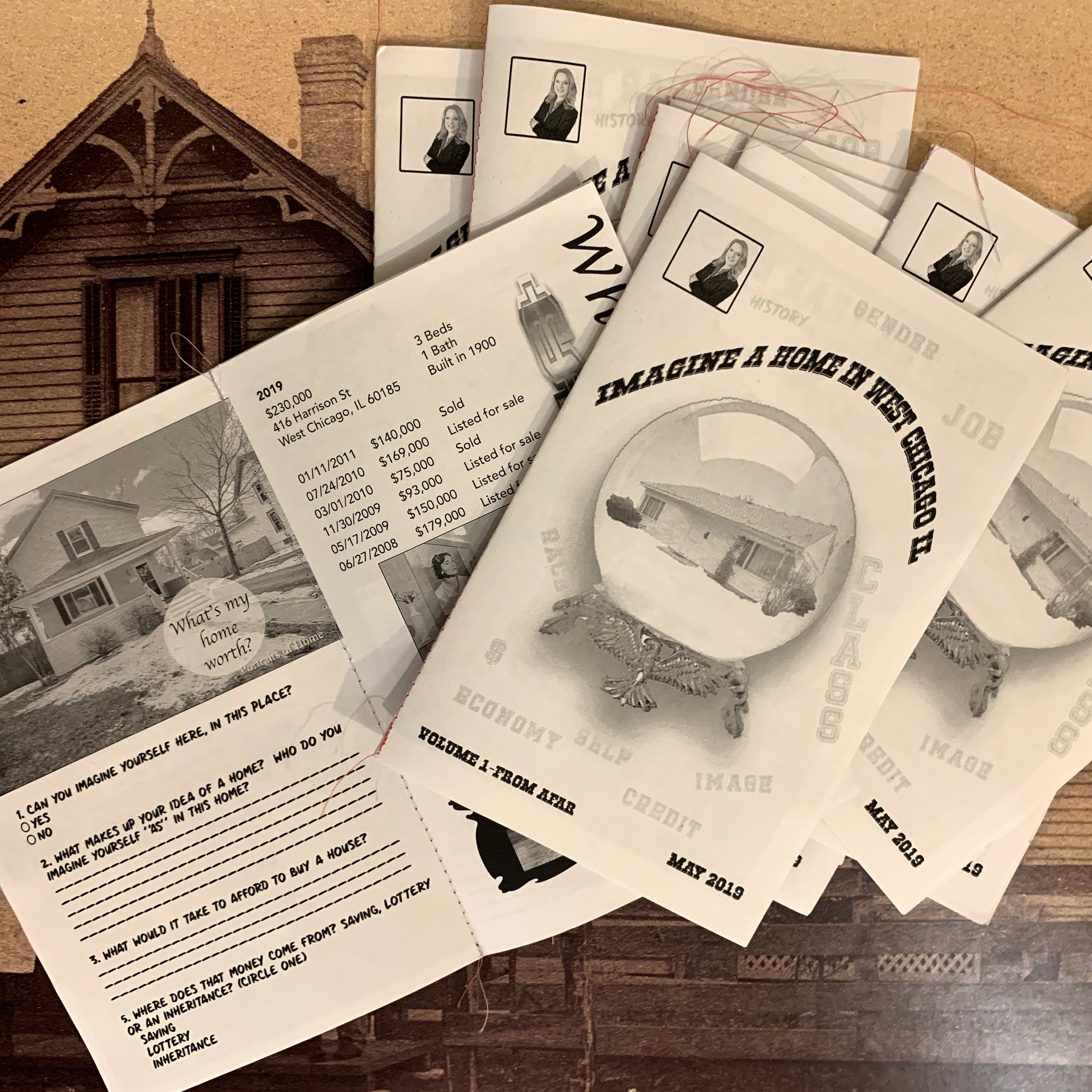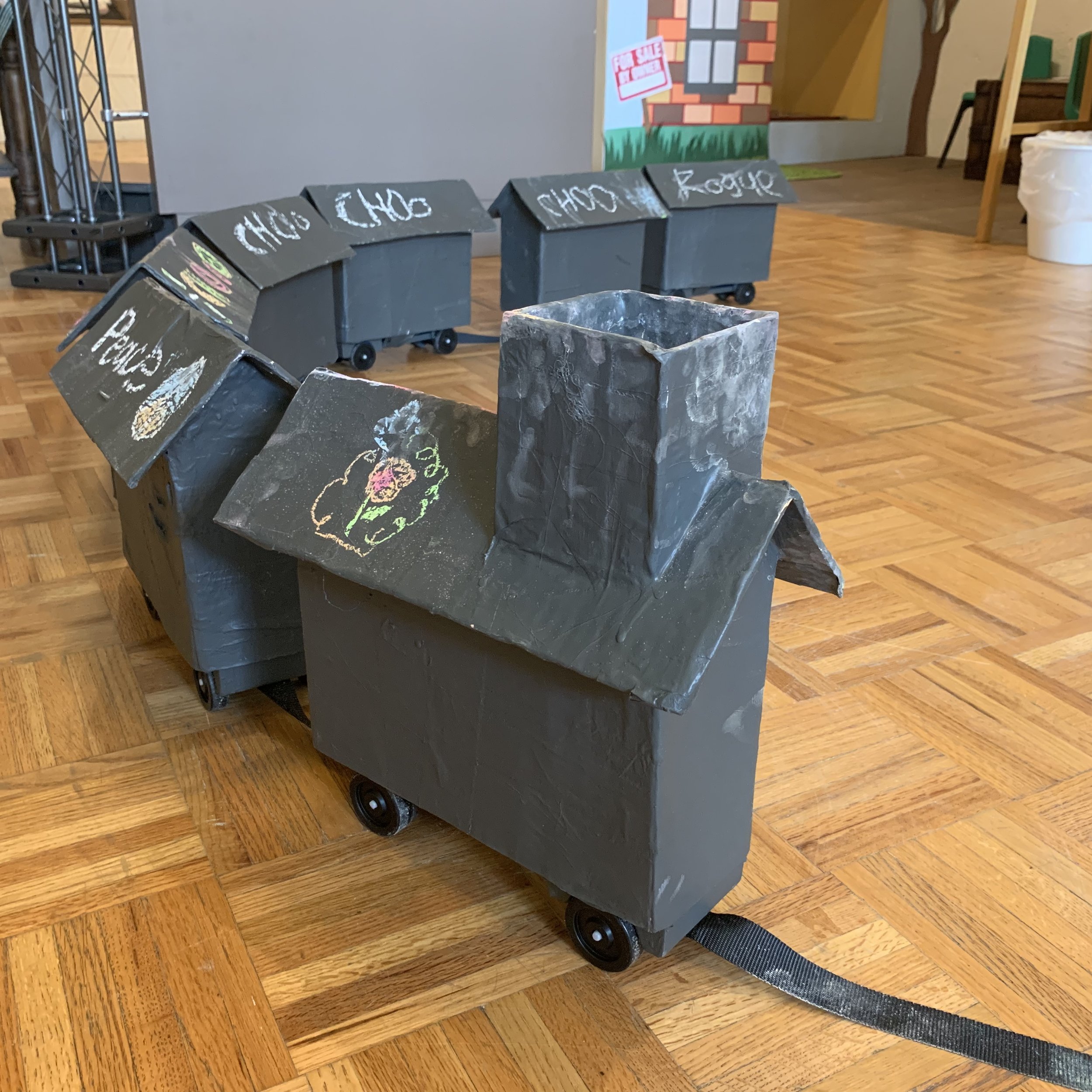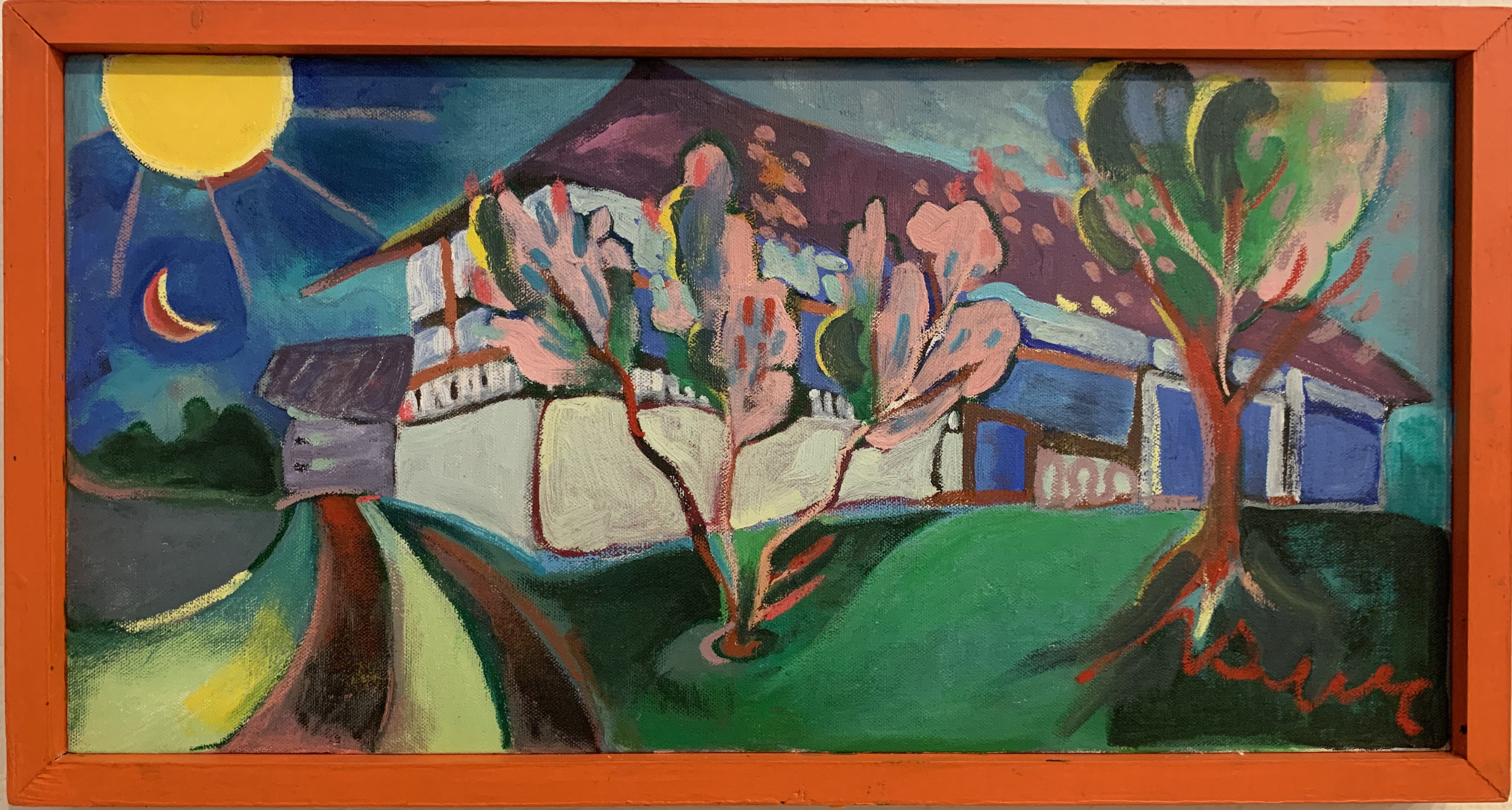Home
Home
Artists explore the meaning of “home” as it applies to the history of West Chicago though eleven new works of art. This exhibit includes items from our collection to help support the artists’ interpretations. Visitors are encouraged to participate in interactive elements of the exhibit. Our children’s area includes a doll house and maps where you can locate your current and former homes, or the homes of your ancestors.
Sara Phalen
Museum Director, Co-curator
Thank you to the artists who put their time, creative thought and personal experiences behind their work. The history of West Chicago has been my driving force over the past 13 years at the City Museum. It also inspired me to make my home in West Chicago, and I’m glad it provided such inspiration for you. I know it will also provide a spark for visitors to reflect on their definition of home and places they have called home. It will invite sharing, something I am grateful to witness everyday through this work. -Sara Phalen, Director
Anni Holm
Co-curator
Home exhibition - Postcards from Home - West Chicago is my home.
I moved to West Chicago in 2004, when my husband and I bought a condo right by the train station, lured by the ease of commuting into the city. It was our first home together. It smelled brand new and a tiny bit of Burger King and train exhaust. We quickly grew used to the engines rumble, the shrieking breaks and bells clanging, whenever endless freight and commuter trains passed through. While the view was nothing to speak of, (the large gray commuter lot against the white wall of Jel-Sert), a 2 minute walk quickly would engulf you in a visual explosion of vibrant piñatas, papel picado, fresh produce and chip bags at the grocery stores next door.
We bought a house 2 years later in the Old Heidelberg neighborhood. Long known as the area where German immigrants first settled, more recently, it was also known for the perpetual scent of either cereal products or bugles from the General Mills plant down the street, mixed with an occasional hint of chewing gum from the Wrigley flavor factory just across the tracks. Our new home is where we continue to hear the train rumble by, a variety of Mexican music genres blasted on weekends from a party tent somewhere, birds chirping, lawn movers humming and church bells that ring on Sunday mornings. A home surrounded by lots of green grass, huge trees and sidewalks. A home that carried a scent of both the time and the people who lived in it. A home, that since we inhabited it, also has been filled with the accents of many visitors for extended periods of time from both near and far.
Not having grown up in the United States, neither place actually felt like home - home, even though I’d say that I have a tendency to easily feel at home. For me home was Denmark, but not the Denmark I’d visit since moving here, but the Denmark I grew up in. For a while, I actually felt homeless, or perhaps just unsure as to where my home was. That was until I returned from the hospital after giving birth to my first child. It was as if, this profound experience all of a sudden had caused me to shoot deep and thick roots. Whereas before I had only had a huge, but very delicate network of roots near the surface -ready to be pulled out at any given time, and return to the home - home. West Chicago had now also become by home-home.
James Burrell (in progress)
Two observations come to mind when asked to think about the meaning of “home.” One is that any home is always temporary. And the second is that you immediately know when you have mistakenly entered someone else’s home.
I believe this second observation means that everyone requires a place of his or her own. Sometimes this means having others provide us a place that must be adapted to our needs. But more often than not we are continuously striving to keep a home as we plan for our next home. And, thus, we must acknowledge that any physical place of refuge and stability is just as temporary as it is required.
So it appears to me that there is no absolute and definitive meaning to “home.” Life asks each of us individually to create that meaning on a daily basis with our actions. And despite our current circumstances, a sense of appreciation for even the minor pleasures creates memories of a “home” that sustain us as we journey to that next home.
Maggie Capettini
un(TIE)tled
canvas, wood, neckties, inkjet fabric, Graham Burnham’s Map of Turner
30” x 30”
For me, "home" relates to a feeling of connection. We moved houses a lot growing up, and while I felt like each physical structure was my home (after settling in), what really made it home was my family, our routines, and our traditions. One of the places we lived was outside of Houston. The Houston area didn't feel like home in the same way the Chicago area did/does. In terms of place as "home," I was not connected down there, and I still am not. On the other hand, we visited my grandparents in far northern Wisconsin every summer, and "the Lake" felt like home. My connection to that place goes back generations, as my grandpa's grandpa originally bought the land when working as a civil engineer for the railroad, and my family has spent summers up there for over 100 years.
Perhaps this is why my work focuses on connections to West Chicago as a place that is "home." As a non-West Chicagoan who knows much of the history and interacts with the people in my role as museum educator, it has been interesting for me to witness the strong connections people have with this town, whether or not they still live here. The dedication folks have to West Chicago as home has left an impression upon me, and I wanted to try to capture and share some of that dedication though my work.
The historical background that has informed my work has come to me naturally as a result of my position at the museum. The realization that people continue to nurture and deepen their connection to West Chicago as home became clear as I worked on my "West Chicago / Meeting Place" series of paintings in 2016. The way people reacted to my paintings in terms of the memories sparked and shared led me to want to include community voices in this new work. I’m grateful that the folks in the WeGo People Facebook group enthusiastically shared what ties them to West Chicago as a home.
In terms of the physical artwork itself, I took a new approach to visually representing my idea and the community voices. It began with the idea of being tied to a community, which evolved into the idea of using neckties as part of the work. I wondered if this was too cheesy, an overly-literal visual symbol. But, when I realized that I could mount the community voices to the underside of the neckties (so that the viewer would need to lift a necktie to read the voice), inviting interaction and physical connection between the viewer and the community voices, I decided to go ahead with the necktie idea.
The lifting of neckties would also act as a reveal for whatever was behind the neckties. For this, I chose the Graham Burnham Map of Turner. This is by far my favorite map in City Museum’s collection. One reason is that the map dates from a transitional and defining time in the town’s development, just after the Elgin Joliet & Eastern Railroad was built, but before the town’s name changed to West Chicago.
Another reason I love this map is the way in which it has a voice that speaks to the viewer in an attempt to persuade one to bring their business or home to Turner: “Turner offers opportunities to manufacturers, mechanics, homeseekers and investors offered by no other point about Chicago at the present time.” Included are images of factory sites in town, as well as a fine home, the Town Hall, and State Bank.
Finally, I wanted to present the opportunity to continue to add community voices to the work. A blank book is presented alongside the artwork for visitors to contribute to the work by sharing what ties them to their “home,” whether it be West Chicago or elsewhere.
Carolyn Hansen
Me by Gee
Home can mean many things to many people, for me though “Home” is made up of people, places and things. The people of home consist of family, both immediate and extended. It also includes close friends and acquaintances that become a part of our everyday lives. Both sides of my family have their roots in DuPage County; so West Chicago, Cloverdale, and Wheaton all represent significant locations of “Home”.
For this exhibit I have focused on things that connect us to our family and our past.
Finding an autobiography that my Mom wrote in high school was a gift from the past that took me home - back to her childhood home and her family, but in sharing it with my brothers, sister, children, nieces and nephews, it reconnected my extended family of today.
In the beginning of the project I sought out other past students of WCCHS from the early 1900’s that wrote biographies. I was made aware of about six, and Sandy Gustafson followed through to participate in the project with her father, Belton’s autobiography. Another person, Vicki Gaudette contacted me because her grandfather, Richard “Dick” Sproat was an artist with artwork of West Chicago from the 20’s and 30’s. He is also included in the project, because the artwork just like the biographies are clues to the past, and gifts from the past that take us home.
My hope is that this exhibit will encourage everyone to rethink home and find their connections to the present and the past.
Sara Heymann
Imagine a Home in West Chicago IL
Zine
Christopher Lucero
Calavera 35 - Escape to a better life
Calavera 36 - Reunited
Jeff Perkis & Jim Perkis, Story Wood (in progress)
For me, “home” is where I grew up, the people and places I know and built a history with. Some people have left, places have changed but the memories remain.
The table I created comes from a tree my father cut down in is back yard. We moved into this house while I was in high school. Having grown up in West Chicago, in what I still consider to be the most “home” I ever felt, it was difficult leaving and starting over. Although Wheaton wasn’t far away, this new home was uncomfortable and unfamiliar. Over time, it eventually became home. One of the things that made that transition a bit easier was that I loved all the large trees in the back yard.
This tree had been struck by lighting long before we ever moved into that house, but it survived and continued to grow. Many years later, it finally came to a point that the damage from the lightning strike was causing the tree to become weak. Fearful that the tree may come down on its own and cause damage to the house, my father decided to have it removed. I saved most of the wood and had it milled into usable form, knowing that I could continue the life of that tree by creating functional items from it. This table is just one of many items already created and yet to come from that tree. It is exciting for me to share a piece of what I consider “home”, with others who have similar ties to West Chicago.
Buddy Plumlee (in progress)
Home is your place of safety, though it sometimes isn't. Home is where your heart is, though sometimes there is not enough love. Home is where you share a meal with others, though some go to bed hungry. Home is where you can just be yourself without worries, though oftentimes even that privacy is violated. Home is where the family is together, though some want to rip families apart.
Home is where you should not have to worry about these things.
I am working on a mixed media piece, 6 feet high by 8 feet wide. Materials include some building materials such as corrugated metal, wood, plaster, caulk, as well as acrylics, metallic paint, and charcoal. Support is burlap and canvas stretched over MDF boards. Process is one of creation-destruction-creation. Piece is representational narrative of families living in box car homes, gardens by the tracks, music and Mother Mary.
Alma Vanessa Rios
It’s Not Home Until You Make It Home
Charcoal
16” x 20”
I gave this name to my work of art because “Home” is where we feel comfortable, where we feel in peace, where we can find joy, happiness, and everything we ever desired, where we feel like we belong and it belongs to us, where we feel love. Home is something we feel and keep close to our hearts.
Home is the structure itself, but what it means to us.
It’s a male’s arm and a female’s arm hugging “West Chicago” their “Home”. The reason why I chose a female and male is because it can be you or me, or anyone who feels a connection with West Chicago.
Eden Ünlüata
Affinity Train
wood toy, cardboard, papier-mâché, sidewalk chalk
variable dimensions
Affinity Train is an interactive installation made in response to Home exhibition. The work uses West Chicago’s history as a major intersection for train lines and as a place that welcomed many immigrant families as a jumping off point. I wanted define ‘home’ as a place where your journey takes you and every encounter, every experience on the way acts as a building block. Many of its residence have travelled long distances to make West Chicago a home, and trains continue to have a presence in everyday life.
This work uses a pre-made wood toy base, covered in cardboard, papier-mâché, and fabric. It is painted with chalkboard paint which affords writing/drawing on it. Each of the train cars are in the shape of a house, and contain little bells in them. The train cars are connected to each other and can be pulled around using the hook.
Affinity Train is intended as an interactive piece where audiences will drag the work around with them in the gallery space as they view other works, and will be able to write/draw on it using chalk.
Marlen Valdez
To me the meaning of “home” is a center of support , love, and safe place to be and feel yourself.
For this exhibit I was inspired by the history of West Chicago and the connection with immigrants.
I come from an immigrant family myself. I wanted portrayed the different paths one may take to find and feel “home.” The paths may not always be clear or in focus.
But once “home” becomes your center point in life and the rest will ease in.
Rachel Weaver Rivera
Spiritual Homes:
St. Michael’s United Church of Christ
Nichiren Shoshu (日蓮正宗) : Myogyoji Temple
St. Mary’s Catholic Church
First United Methodist Church
Congregational Church
Acrylic
various sizes
My intention was to represent houses of worship in West Chicago by capturing the life-energy of their congregations. I chose my subjects, First United Methodist, St. Mary’s, Myouguoji Temple, and St. Michael’s United Church of Christ, because they demonstrate faith through their actions. They welcome and serve new immigrants, invite people of all cultures to learn together, partner with community organizations, assist the homeless, and commit to environmental sustainability.
I also represented the Congregational Church which once stood at Arbor and East Washington. It was torn down in 1961. I painted it to explore the idea that perhaps although the building itself is gone, somehow its spirit still exists in the hearts and memories of the people who once gathered there.
St. Michael’s United Church of Christ
400 W. Washington St.
West Chicago, IL
We welcome people of all ages, races, abilities, gender identities, and sexual orientations. We have three Community Partners: West Chicago Elementary School District 33’s Birth to 3 Program, Healthy West Chicago, and People Made Visible.
Nichiren Shoshu (日蓮正宗): Myouguoji Temple
1S100 IL-59
West Chicago, IL
“Myogyoji temple is a place where people from all backgrounds and cultures come together to chant and learn the teachings of Buddhism based on the 750 year tradition of Nichiren Shoshu Buddhism.”
St. Mary’s Catholic Church
140 N. Oakwood
West Chicago, IL
“We are a Catholic Community in its Second Century of Service Built Upon Faith, Family and Diversity.”
1st United Methodist
643 E. Washington
West Chicago, IL
“We are committed to environmental sustainability, to sheltering the homeless population and to being the church into our third century of ministry.”
The Congregational Church
Once located at Arbor Avenue and East Washington Street
West Chicago, IL
“Soon the land occupied by the church will become a parking lot. The community will be the poorer for it. The congregational church with its tall spire, has for 76 years lent dignity and something of a spirit of a better world to this largely commercial space. No buildings will rise that will make a better nor more uplifting skyline than whose lines rise upward to a tall spire or cross. –West Chicago Press, July 27, 1961


























